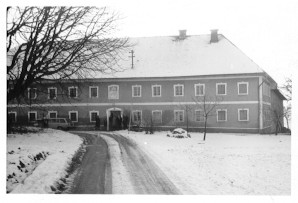Stone/Iron-Age Europe
Today, a story of wood, copper and iron. The University of Houston's College of Engineering presents this series about the machines that make our civilization run, and the people whose ingenuity created them.
Our minds teem with images of intellectual and physical grandeur in ancient Egypt and Greece. What was going on at the same time in Northern Europe? Let's pick that question up at the end of the Stone Age. A little before 3000 BC Egypt began using copper and (at the same time) took up the first hieroglyphic writing.
Stone Age technologies lingered longer in Europe, even though copper appeared in the North as early as it did in Egypt. The famous Iceman of the Örtztaler Alps was recently found, preserved since 3300 BC in high-altitude ice. His axe had a wooden handle, but it also had a fine copper head. The copper wasn't mixed with tin to make bronze, but then neither were the first Egyptian coppers. Both Egyptians and Europeans began finding natural bronzes around 2000 BC. Natural bronze turned up in both wealthy English burial sites and in Egypt about that same time.
But Europe remained primarily a land of wood. Her buildings were far less grand than the pyramids, but European lake-dwellers did develop a rich economy of wooden houses, fine pottery, and articulate tools of stone and wood. Even after the Great Pyramid, the largest buildings made for human occupancy were still European long-houses. In 2000 BC, a typical 130-foot long-house near present-day Cologne served people, cattle, and utility functions.
I saw how that worked when I visited my grandmother's old home in Austria. It was also a long-house, but bent in four right-angle turns to form a square around an open courtyard. It still housed all the farm functions under one roof. You could walk from the parlor to the barn without going outside. Manure, stacked in that courtyard, gave off heat to the house around it as it decomposed and turned into fertilizer.
By 1500 BC kilns were hot enough to let people mix their own hard bronze alloys. And around 1100 BC, temperatures had become high enough to separate iron from its ore as well. Iron use was widespread in the Eastern Mediterranean area by 1000 BC. Soon after that, ironworks appeared all over Central Europe. An early Iron Age Polish village, now excavated and rebuilt, has wooden walls, wooden watch towers, and streets paved with logs, but only a little iron -- and that tells us much about Europe and metals.
Ancient Europe was far more than the wilderness outback we imagine -- more than just a forest overrun by nomadic barbarians. Yet it produced none of the science, and little of the advanced technology, of Egypt and Greece. That Polish town, with its minimal use of metals, relied on the wealth of surrounding wood. Poverty of means often elicits a wealth of invention, and Egypt was poor in wood. When I look at early northern Europe, I see a people with all the ready building material they could use -- a people whose development was rendered static for a long time, by so much wood.
I'm John Lienhard, at the University of Houston, where we're interested in the way inventive minds work.
(Theme music)
Bahn, P. G., 100 Great Archaeological Discoveries. New York; Barnes & Noble books, 1995.
Singer, C., Holmyard, E.J., and Hall, A.R., A History of Technology. Vol. I, New York: Oxford University Press, 1954, Chapter 21.


Photos by John Lienhard
The old Klingelmuller home outside of Kremsmunster in Austria. On the left is the outward appearance of the house. It is, in fact a long-house, folded into a square in such a way that all the functions of a farm are contained within a single structure. On the right, a view of the inner court with the great manure pile (to the right) in its center.